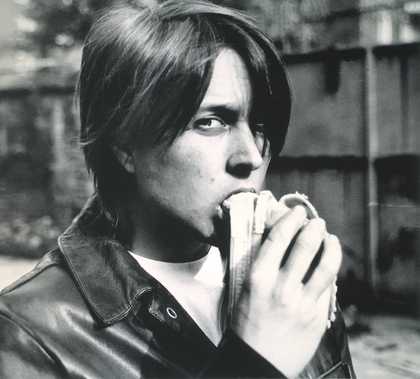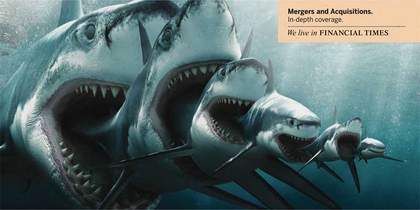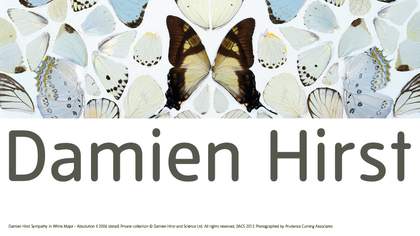This paper focuses on unstable organic materials and artistic strategies relating to conservation and replication. In 2004 Damien Hirst’s The Physical Impossibility of Death in the Mind of Someone Living 1991, hit the headlines when the work was sold to an American collector. However, the media attention did not focus on the selling price alone but on the fact that the shark, once caught in Australia, faced a second death: the original animal was showing advanced signs of decay and Hirst had substituted it with a fresh specimen. This is an example of the problem unstable materials pose in contemporary art. Since the 1960s especially, ephemeral substances have been used by many artists and Hirst’s substitution provokes a now familiar set of questions. How should one deal with the short-term durability of certain materials? And how does replacement affect the meaning and value of the work?
In this paper I should like to argue from a perspective of the ‘iconography of materials’, looking at the processes of production, the history of the materials, and techniques used to preserve works. As part of his artistic strategy, Hirst aims to use or reflect the operating modes of the global economy and its commodity flows. In 1991 he ordered by telephone the tiger shark from a professional Australian fisherman. The captured animal was deep-frozen and sent to London. Comparing this piece to similar works, one could argue perhaps that this specimen incorporated a singular history and that its substitution would affect the nature and identity of the work. But the artist chose a very specific mode of presentation – the technique of so-called wet preparation associated with natural science museums founded in the nineteenth century. Although this scientific mode of presentation suggests that the animal was an authentic material, as it were, this is not the case: the inconspicuous but powerful formaldehyde solution is predestined to convert ephemeral corpses into more resistant forms, hardening tissue so that after the treatment the bodies seem to consist of rubber. At this point, the animal can be regarded no longer as an individual entity with a specific history but an object of knowledge, a representative of its species. This way of working perpetuates an old hierarchy found in aesthetic theory from the time of Plato in which the form is regarded as of higher value than the material, and everything is done to preserve the form for posterity, no matter what happens to the materials.
Hirst’s shark was always meant to present the physical results of death and the inherent instability of organic material was therefore not unanticipated – it was not a vice but part of the work. As the artist knew that the chosen solution could not prevent the shark from rotting, it was always his intention to show the processes of decay. Hirst’s methods of preservation do not stop the deterioration; they slow it down to a point were it is hardly detectable. However, the material is not allowed an uncontrolled life of its own. The shark – and the many other animals of Hirst’s Natural History – are kept in a zombie-like undead state of abeyance. Decomposition, in the sense of much process-based art of the 1960s, is not the goal; Hirst’s unstable materials do not revolt against the enshrining walls of its steel and glass cases, or the institution of the museum, and nor does the artist refuse the creation of a tradable object.
In 2003 the formaldehyde solution of The Physical Impossibility of Death in the Mind of Someone Living was so cloudy that the animal within the case could hardly be seen. It was therefore not surprising that the dealer Larry Gagosian announced that the substitution of the shark should be seen in much the same way as the replacement of a broken neon tube in an installation by Dan Flavin. To a certain extent, this might be true: like all wet specimens prepared for the collections of the natural sciences, Hirst’s object has to be taken care of regularly, and the evaporated solution has to be refilled or the whole fluid has to be replaced. If the processes of decay have proceeded so far that the animal has become a highly visible corpse and is no longer undead, it is legitimate, from the perspective of the artist, to substitute the animal.
Although Damien Hirst is concerned with preservation in his Natural History series, the concept of originality as something singular has become obsolete. If one looks at the many works in the shark’s wake which use farm animals in minimalist display cases, it appears obvious that seriality is employed as an artistic strategy to counteract the model of uniqueness and notions of artistic subjectivity. The substitution of the shark does not contradict the concept of this group of works at all – on the contrary, it strengthens the desired effect of mass production. The substitution of the animal should thus not be rated as a surrogate of an original but as a remake. The original frame and concept and a similar shark – these do guarantee not authenticity but rather a continuity of the performance. However, in contrast to works by, for instance, Sarah Lucas, which use fresh fruit that the particular owner or exhibitor should exchange regularly, it obviously matters who is substituting the shark. Damien Hirst’s company Science Ltd offers to replace any animal that is older than ten years.
Perhaps this case could open discussion about how useful it is to look solely at artists’ intentions to solve questions regarding conservation. If the shark is not substituted, the art work, in the sense of Damien Hirst, dies, though it could be argued that at this point it would be set free for other usages and meanings. Maybe one should raise the question: at what point is it no longer reasonable to make a remake?




